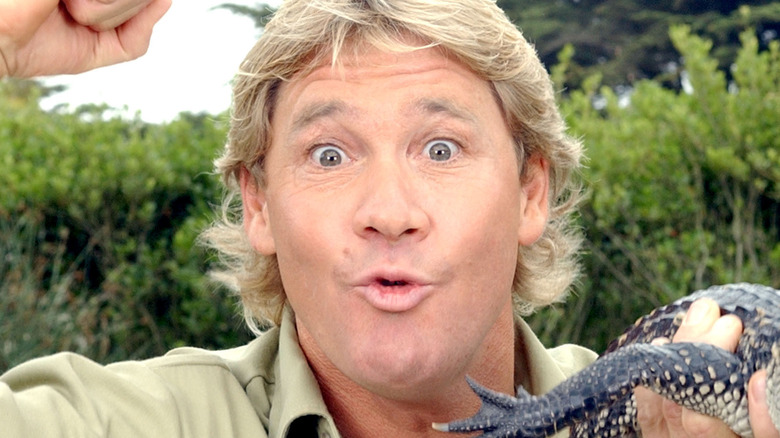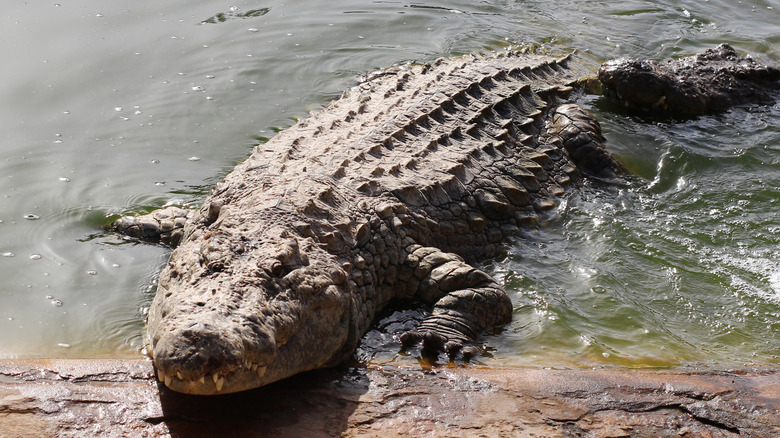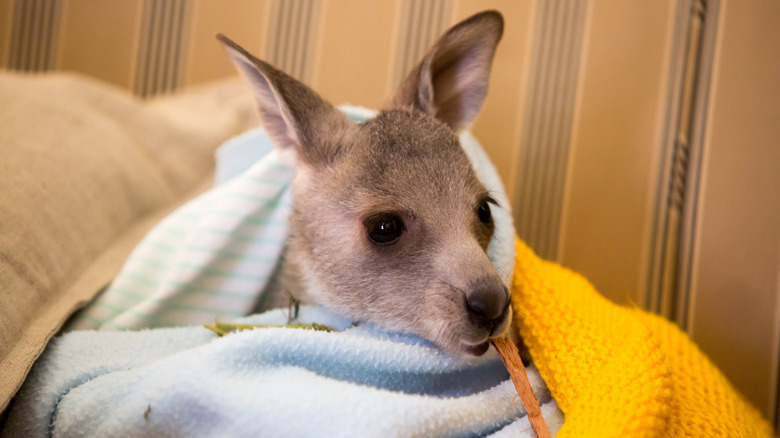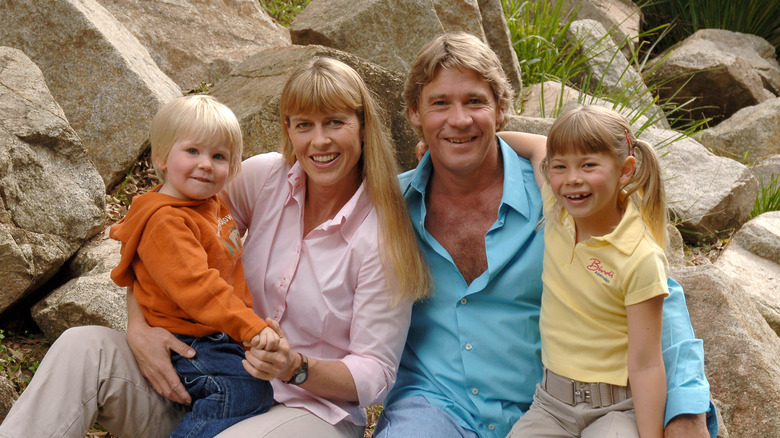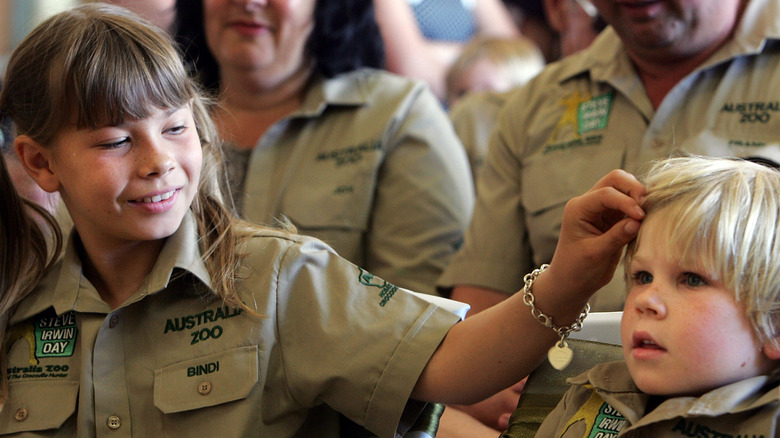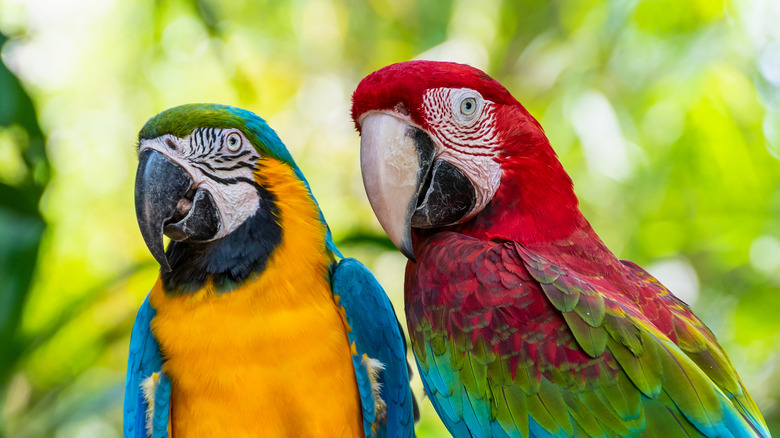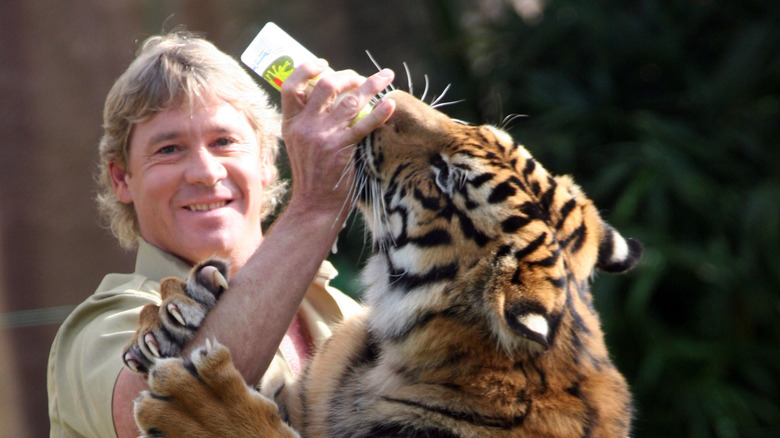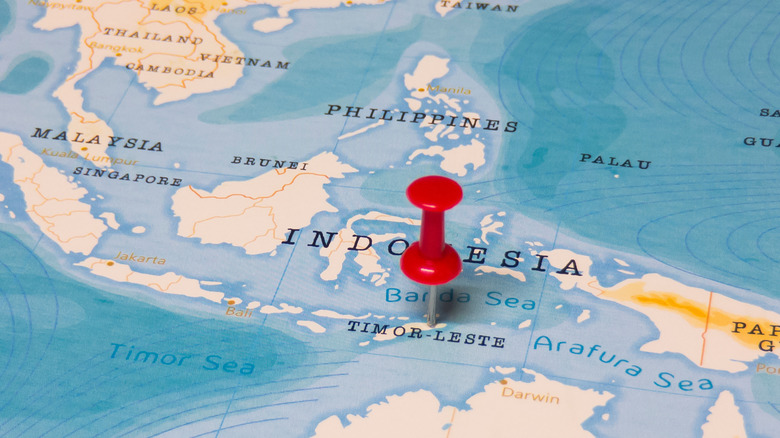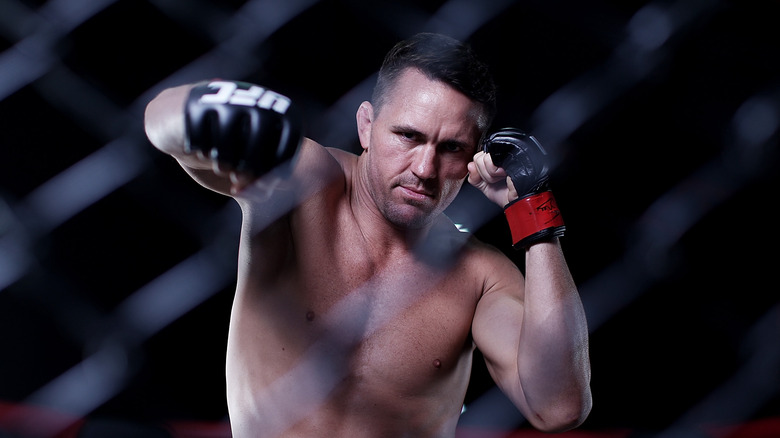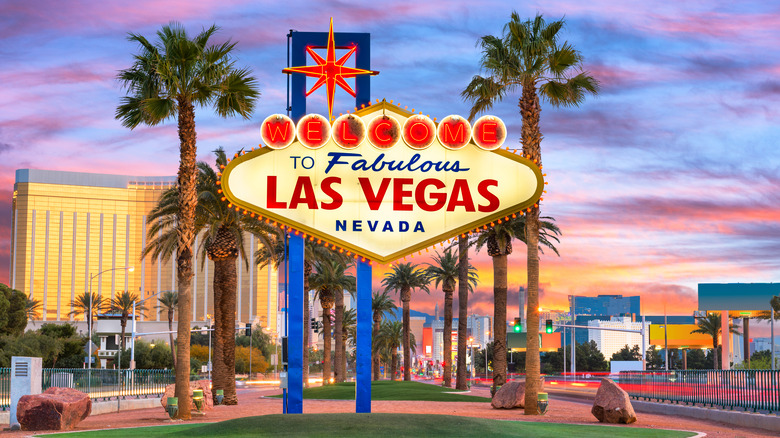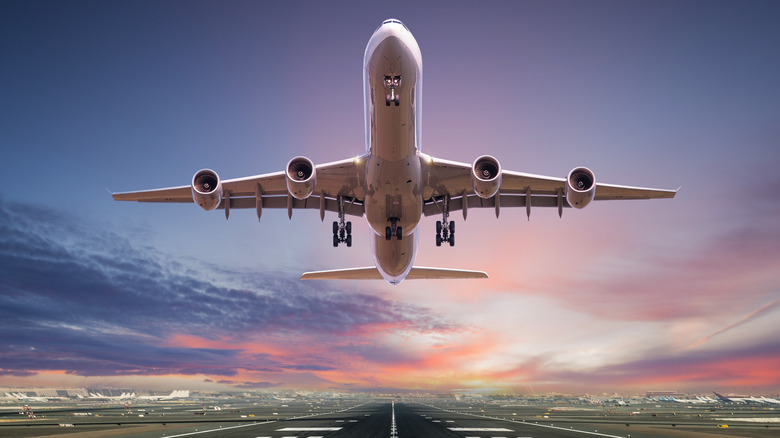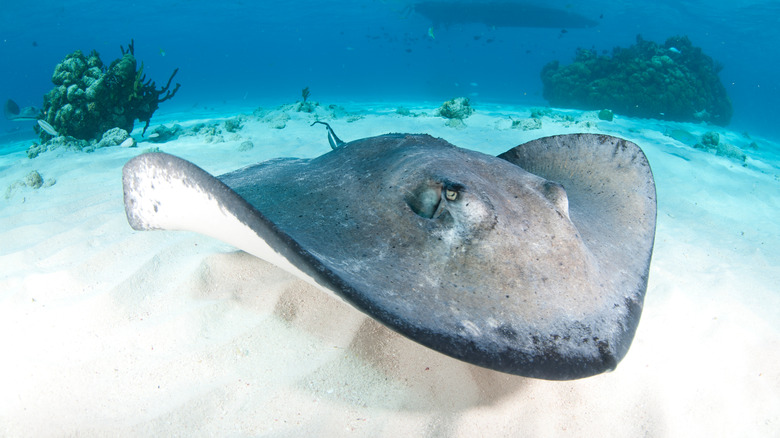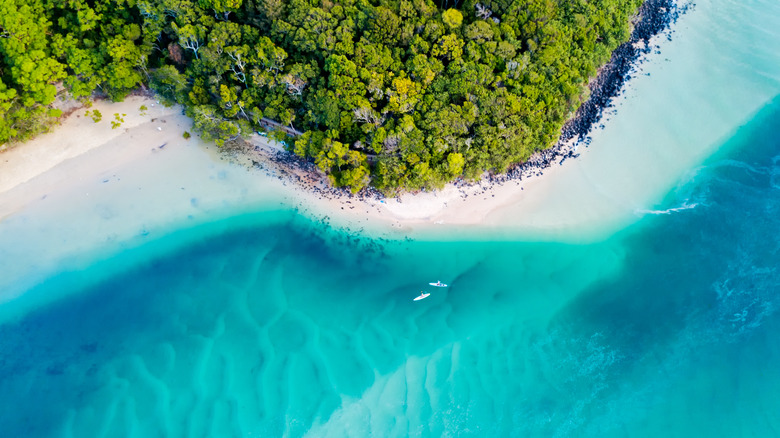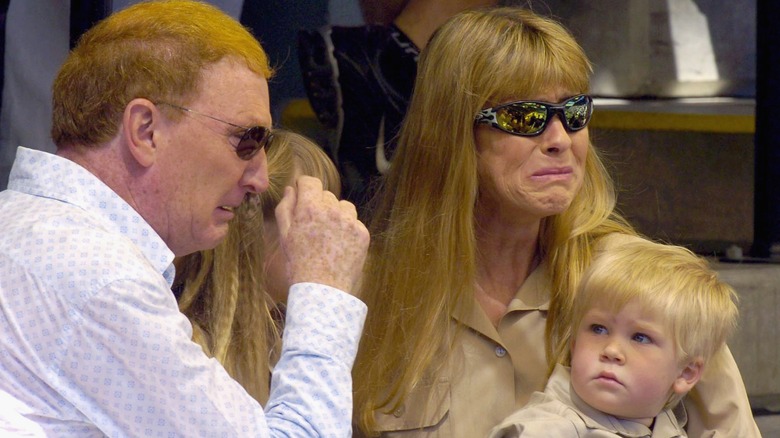Little-Known Facts About Steve Irwin The Crocodile Hunter
Steve Irwin is well-known the world over for his career as a conservationist, wildlife expert, and zookeeper, not to mention the star of the popular show "The Crocodile Hunter." His larger-than-life personality, fearlessness in the face of danger, and love for his family made him an extremely well-liked celebrity from the '90s to the mid-2000s. At the height of his fame, "The Crocodile Hunter" was watched by nearly 500 million people in over 130 countries. Sadly, his career was cut short in 2006 when he was killed by a stingray while filming in the Great Barrier Reef. His legacy lives on in his surviving family members and in the zoo that he loved so much.
But while all of that is common knowledge, how much do you really know about Steve Irwin? Check out these little-known facts about the beloved naturalist and learn more about how he grew up, how he felt about his wife and family, his lifelong career of wrangling dangerous animals, and his untimely death at the age of 44.
He was already handling dangerous animals in elementary school
Steve's parents were both naturalists, and his father had a particular love for reptiles that he passed on to his son. As he told Larry King in 2004, he caught his first snake — a five-foot-long venomous brown snake — while out with his father in Bulla, Victoria, at the age of four. He trapped it with his sandaled foot and called excitedly to his father, who swooped in and knocked the young Steve away from the trapped snake. The elder Irwin wondered why the snake had not bitten his young son, and came to the conclusion that Steve had a special gift for communicating with animals. Two years later, Irwin's parents gave him a 12-foot long scrub python named Fred for his sixth birthday.
It wasn't long after that that Steve began handling crocodiles. His father, hoping to nurture Steve's natural gift, enlisted his help at their family-owned reptile park. It was there that he taught Steve how to properly deal with crocodiles. By age nine, Irwin was catching and wrestling the huge reptiles, making both of his parents proud.
He rescued animals with his mother as a child
Steve's mother, Lyn, was a maternity nurse who quit nursing to follow her passion for wildlife rehabilitation. Steve was incredibly close to Lyn, with whom he shared a birthday. When he was a child, Steve and his mother worked together to save animals. The young Irwin was often late to school because he and his kind-hearted mother were rescuing lizards on the way there. His mother also rescued wombats, joeys, koalas, and platypuses who were hit by cars.
In an interview with Andrew Denton in 2003, Steve described his childhood home as being full of artificial kangaroo pouches slung over chairs, each with a little kangaroo joey in it. Additionally, the family shared their house with koalas, sugar gliders, possums, and — thanks to his father's love of reptiles — tons of snakes.
Tragically, Lyn died in a car accident in 2000. Steve memorialized her, saying, "You are the most beautiful, loving, nurturing, and caring person to have ever blessed this world."
He was super nervous about marrying his wife, Terri
Steve met his wife, Terri Raines, for the first time in 1992 at the Australia Zoo. She was visiting from the U.S. and he was doing one of his famous crocodile demonstrations. It was love at first sight, with Terri describing Steve as a "larger than life superhero guy", and Steve saying he "got so lucky ... when she walked into the zoo." He was so distracted by her beauty when he saw her in the crowd that he took his eyes off the crocodile for a few dangerous moments. Terri stayed after the show and, as Steve said, "that was it — head over heels in love."
Just months after that first meeting, the two got hitched. Steve would later describe it to Andrew Denton as the scariest day of his life. He felt completely out of his element in the suit and tie and was panicking through the whole thing. He was so freaked out, in fact, that he wasn't able to consummate the marriage when they got back to their honeymoon suite. Instead, he ate a steak.
Steve and Terri really wanted a boy after having their daughter, Bindi
Like most fathers, Steve had a special relationship with his little girl, Bindi. When it came time to try for a second child, however, he and Terri wanted a boy. "We got Bindi, we wanted the perfect set,' he told Larry King.
The Irwins went to great lengths in order to ensure their success. Terri followed a special high salt, dairy-free diet that was said to increase the chances of conceiving a boy. Steve did his part by giving up underwear in order to increase airflow as he had heard that it was more likely to conceive a boy with cooler sperm.
Despite their desire to have a boy, once Terri was pregnant, they opted not to find out the baby's gender at the ultrasound. "It's not like we can throw it back," Irwin joked. Their hard work paid off in 2003 when their son Robert was born.
He was afraid of parrots...
Steve wasn't afraid of crocodiles, venomous snakes, or sharks, but he was very uncomfortable around parrots. "For some reason, parrots have to bite me," he told Scientific American. "That's their job." He was often the victim of parrot bites and came to fear their sharp, strong beaks. One almost tore his nose off. Their bites must have hurt quite a bit, as Irwin once literally had his finger snapped off by a crocodile, and he was never afraid of them like he was of parrots.
Irwin's relative comfort with reptiles was formed as a young child. They just weren't scary to him, even though he knew that he had to take special precautions around them. It was likely partially his confidence and many years of practice that helped him avoid serious crocodile injuries. He had much less experience with parrots, and his nervousness and general lack of contact with them probably contributed to their cantankerous behavior toward him.
...But people scared him more than animals
When asked if he ever felt afraid, Steve was happy to discuss the types of situations that scared him the most. They weren't what you'd expect, though.
Irwin spent time in various locations that were embroiled in wars and uprisings, including East Timor, South America, and Kenya. Being witness to the destruction wrought by human beings weighed heavy on Steve, but what scared him the most was the burden of protecting his children in such a world.
Irwin lamented the fact that the world had changed post-9/11, telling Andrew Denton that he feared the "dark cloud of terrorism" that threatened humanity. Bindi was five at the time of the interview and had already been on about 230 flights. While Irwin felt it worthwhile to bring his family everywhere he went, he was afraid of them being the victims of a terrorist attack. "People factor does actually scare the living daylights out of me," he said. When asked by Denton if people scared him while animals did not, Steve responded, "Oh, fair dinkum mate, they do."
He once saved sacred crocodiles in East Timor
During the East Timorese struggle for independence from Indonesia, many people were killed or displaced by militia violence. In the aftermath of this, it was discovered that two captive crocodiles, which were sacred to the Timorese people, were being badly neglected.
Steve was called in to help. In an interview with Scientific American, he described the awful condition the crocodiles were in. The female was missing an eye, and they were both being kept in festering pits. There were even rumors that they were being fed human body parts. Irwin and his team patched up the crocs, made them better enclosures, and gave their keepers some tips on crocodile care.
After they had helped with the crocodiles, Terri smartly suggested that they donate to the humans of East Timor to help in their relief effort. She noted that it would not be right to spend tens of thousands of dollars helping two crocodiles while neglecting the plight of the East Timorese. Steve agreed, and they gave the local church leader money to build a new medical center for the people.
He trained as a mixed martial artist
Now-retired UFC fighter Kyle Noke worked as Irwin's bodyguard for three years while the Crocodile Hunter was on TV. Steve hand selected Noke for the job because he was a fan of MMA, and admired Noke's fighting style. Noke admitted that Irwin was big and strong enough that he didn't really need a bodyguard. In fact, Irwin had trained with other UFC fighters and wanted to train with Noke as well.
The men trained together every Wednesday morning in a special cage Irwin had made at the zoo for just that purpose. Noke remembers that Irwin was often so excited to spar that he would already be there hours early, warming up. "He was super strong," Noke told an interviewer for the UFC. "Whenever he held you down ... he'd get on top of you and there was no way you could get him off you." That totally makes sense, with all the crocodiles Irwin had wrestled.
He wanted to open a zoo in Las Vegas
In 2003, Irwin began floating the idea of creating a zoo in Las Vegas. He hoped it would be an extension of the Australia Zoo brand and be populated exclusively with Australian animals. Like the original Australia Zoo, it would be known for its hands-on approach. Steve described his idea to Larry King, emphasizing that it would be a place that people could go to "pat, kiss, cuddle koalas."
Why Las Vegas? Irwin noted that the city did not have a zoo and that this type of project was perfect for the exciting atmosphere of the popular tourist destination. Steve also just loved Las Vegas and dreamed of his family splitting their time equally between there and Australia.
The project was abandoned when Irwin died, but over the years, discussions would crop up about reviving it. In 2009, the mayor of Las Vegas was still interested in making the zoo a reality and dreamed of putting it next to a children's hospital. "I think it would be great to have the crocodile zoo ... next to a children's hospital where children have to be cheered up," said Mayor Oscar Goodman.
This seems to have been the last time the zoo was discussed seriously, as no trace of public discussion can be found post-2010.
He hated flying on planes
Irwin routinely split his time between Australia and the U.S. and traveled all over the world for his shows, so you'd think he would be completely comfortable with plane rides. However, this wasn't the case.
Steve found planes incredibly boring and lamented the fact that he wouldn't stick his arms out the window or pull over for a pit stop. He told Andrew Denton that while he liked to watch a good movie, he was much less enthused about watching five in a row while on a long flight. Reading was fine, but not something he wanted to do all day. Going to America from Australia took about 14 hours, and just sitting in one place was torturous for a man with so much energy. "I haven't made it in the tabloids as the bloke who started the riots and stuff on the planes yet, but I guarantee you it will happen," Steve told Denton.
His death was caught on tape
Cameraman Justin Lyons was there the day that Steve Irwin was killed, shooting footage with him in the Great Barrier Reef. He was getting one last shot of Irwin swimming behind a stingray when the giant beast reared up and starting stabbing him wildly in the chest. It happened so quickly, Lyons said, that he didn't even know anything was wrong at first.
When Lyons panned out with the camera, he saw that Steve was "standing in a huge pool of blood" and realized that he had been badly injured. The cameraman approached and assessed the damage. He would later describe the wound by saying that the "jagged, sharp barb ... went through Steve's chest like a hot knife through butter."
A second camera continued rolling as Lyons and other crew members tried to save Irwin. This was done because they had been asked to capture any attacks on tape. Sadly, the stingray had pierced Irwin's heart, killing him. His last words, spoken to Lyons: "I'm dying."
All of this footage was handed over to Queensland police for their investigation. Copies of the tape, which was described by producer John Stainton as "too disturbing to ever be shown," were destroyed after review, save for two: one which was given to Terri (who promptly destroyed it), and one that presumably sits in the police vault, never to be seen by the public.
After his death, somebody may have killed stingrays in revenge
After Irwin's death, nine dead and mutilated stingrays were found on Dundowran Beach on the east coast of Australia. This prompted some environmentalists to worry that they may have been targeted as an act of revenge.
The stingrays, which are normally very peaceful, docile animals, were found with their barbs cut off. Some felt that this indicated that they were killed in retaliation for Irwin's death, but others have pointed out that there may have been a perfectly normal explanation for the phenomenon: fishermen in the area were known to cut the tails off stingrays that were caught by accident. This was done to avoid being stung.
In the wake of these events, Michael Hornby, a spokesman for Irwin's conservation group, warned fans to leave the stingrays alone. "We will not accept and not stand for anyone who has taken a form of retribution," he said. "That's the last thing Steve would want."
His father rejected a state funeral for him
Australia's Prime Minister, John Howard, offered Irwin's family a formal state funeral in his honor, but was the gesture was refused by his father. Bob Irwin said that Steve would want to be remembered as an "ordinary bloke." Instead, a quiet funeral was held for his family and friends at a funeral home in Caloundra on September 9, 2006.
The family obtained permission from the local government to have Irwin buried in the Australia Zoo. They knew that he would have wanted his final resting place to be the zoo to which he had dedicated his entire life. The grave is not accessible to the public, and its exact whereabouts are a secret.
Steve's family knew that the public would want to say goodbye as well, so a public memorial service was held soon after at the Australia Zoo's Crocoseum. The service was attended in person by 5,000 people and watched live on TV by about 300 million worldwide. Eulogies were given by his daughter, Bindi, the prime minister, actor Russell Crowe, and Steve's dad, who asked viewers to "grieve for the animals who have lost the best friend they ever had, and so have I."
